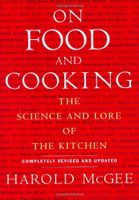Frying and Sautéing
By Harold McGee
Published 2004
Baking oiled vegetables is sometimes called “oven frying,” and indeed true frying in oil also desiccates the food surface, browns it, and enriches the flavor with the characteristic notes contributed by the oil itself. A food may be fried partly or fully immersed in oil, or just well lubricated with it (sautéing); and typical oil temperatures range from 325–375°F/160–190°C. True frying is faster than oven frying because oil is much denser than air, so energetic oil molecules collide with the food much more frequently. The key to successful frying is getting the piece size and frying temperature right, so that the pieces cook through in the time that the surfaces require to be properly browned. Starchy vegetables are the most commonly fried plant foods, and I describe the important example of potatoes in detail in chapter 6. Many more delicate vegetables and even fruits are fried with a protective surface coating of batter or breading, which browns and crisps while the food inside is insulated from direct contact with the high heat.
Become a Premium Member to access this page
Unlimited, ad-free access to hundreds of the world’s best cookbooks
Over 160,000 recipes with thousands more added every month
Recommended by leading chefs and food writers
Powerful search filters to match your tastes
Create collections and add reviews or private notes to any recipe
Swipe to browse each cookbook from cover-to-cover
Manage your subscription via the My Membership page
Part of
Advertisement
Related Recipes
-
-
-
-
Related Reference
-
-
-
-
Advertisement



